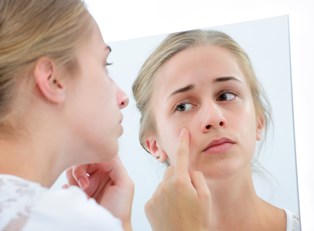Acne is a frustrating problem that plagues both teenagers and adults. Although all acne presents the same types of problems, such as redness and pain in varying degrees, there are four different types of acne. Classifying the type of acne you're suffering from is the first step in creating a treatment program for acne removal that will be effective for your acne solution.
Acne Classification
Dermatologists classify acne into four different grades. The criteria for each grade include:
- Types of non-inflamed blemishes
- Types of inflamed blemishes
- Amount of activity on the face
- Amount of inflammation
- Location of acne on the body
Grade I Acne
Grade I acne is the lightest and mildest type of acne. Pimples will appear, but they will generally be small and not inflamed. There will usually only be a few pimples at any one time. Blackheads can be found at this grade, but there will never be any inflammation. This type of acne is usually found on people who are going through early adolescence, but grade I acne can also be found on the faces of adults. This is easily treated by over-the-counter products that have salicylic acid in them. If you do not find an acne solution, there is a very high chance that it could turn into the more severe grade II acne.
Grade II Acne
Grade II acne is generally described as "moderate" acne. Both blackheads and milia, or "white heads," will be present. While grade I acne tends to limit itself to the forehead and the nose, grade II acne will progress across the face, especially to the cheeks, chin, and jaw line. This grade of acne can also be found on a person's chest and shoulders. Grade II acne will usually need to be treated using a substance that contains both salicylic acid and benzoyl peroxide. The benzoyl peroxide destroys the bacteria that causes breakouts. If a treatment program does not produce positive results, then it may be time to visit a dermatologist who will be able to stop the grade II acne from becoming grade III acne.
Grade III Acne
Grade III acne is considered to be severe. The main difference between grade II and grade III is that there is a lot more inflammation present with grade III. There will be a lot of pustules, and the treatment process is a combination of over-the-counter medications and systematic therapies that require prescriptions for acne removal.
Grade IV Acne
Grade IV acne is also known as cystic acne. This grade is characterized by a large amount of pustules and blemishes that are very painful. This type of acne will usually affect areas of the body besides the face and generally results in scarring. This type of acne needs to be treated by a dermatologist and may need acne removal.



